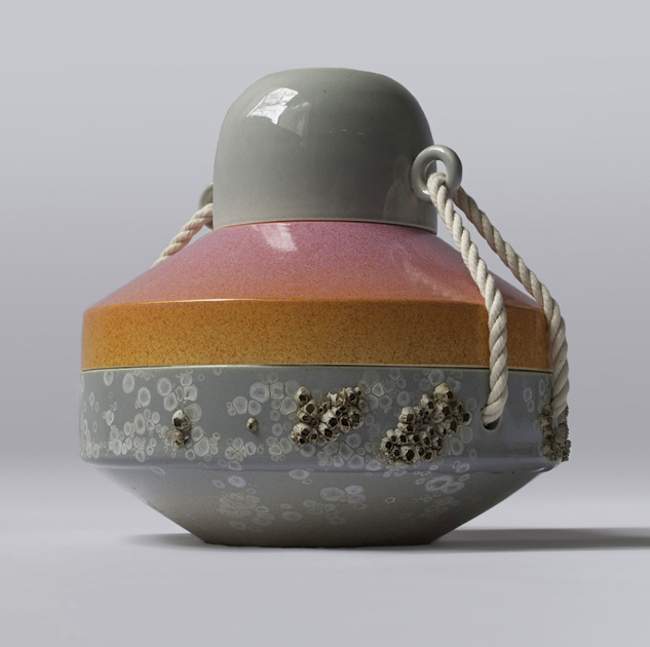Colorful ceramic objects were paired with an unlikely aesthetic choice, barnacles, in Something Like This Design’s “Intertidal Deployment Objects 2” series.
The studio states that the series arose out of their interest to work with ceramic forms that would interact with and relate to the marine environment. The objects reference navigation buoys, floats, knots, jugs, bottles and industrial equipment. The forms slightly abstract these objects, then combine them with soft blues, pinks and yellows. The floats are comprised of component parts that can be interchanged to create a variety of objects.

They got more complicated with the second run of the series, leaving more things to chance. The studio submerged the sculptures into the ocean, allowing barnacles, mussels and other marine life to cling to their surfaces. The studio states:
“Though typically seen as fouling organisms by people who work in the marine environment, we find barnacles and other sea life to be beautiful and hope that their inclusion in the work will raise awareness of the many industrious organisms that can contribute to the generation of designed work.”
Something Like This Design is an experimental design studio, founded by Trygve Faste and Jessica Swanson. Faste has an MFA in painting from Cranbrook Academy of Art. He was an interim artist in residence at Cranbrook, running the MFA painting program in 2005. He’s currently an assistant professor in the Product Design Program at the University of Oregon. Swanson has an MFA in sculpture from the Art Institute of Chicago. She’s taught at colleges and universities in Washington, Oregon and California.

The studio’s goal is to “create thoughtful, functional designs that stem from their interest in the nexus of design and studio art.” Their studio is named after a phrase that appears again and again as they collaborate.
What do you think of Something Like This Design’s contemporary ceramic art? Let us know in the comments.


Something Like This Design, Intertidal Deployment Objects 2. Photographs courtesy of the studio.






Ceramics enhanced by barnacles work for me! Barnacle shells are beautiful on shoreline rocks and allowing them to colonies pots gives them added beauty. Of course there were once living creatures in the shells so this may be a little tainted by death.